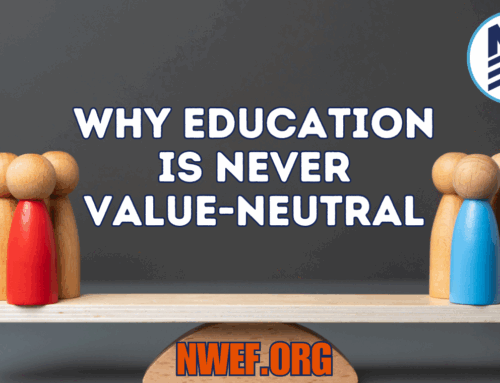
By Dr. Karen Hiltz
—
Have you ever wondered how school choice programs are created?
Is choice really something that American families desire? How come some states offer a range of options while others offer virtually none? Why does the mere mention of school choice produce anger and hostility between advocates and opponents?
For those not familiar with the term, “school choice” refers to the availability of learning environments other than traditional, zip code assigned, public school. Most parents are aware of public and private school options—and possibly homeschool— but do they know there are other choices?
There are! Options include charter and magnet schools; scholarship, tax credit and voucher programs; education savings accounts; and education pods.
So, why do many believe there are only a handful or no education choices? Because all of these options are not available in every state. It’s state legislators who propose and pass legislation that determines or drives what choices are authorized within each state’s education system.
Constitutions
Let’s start from the beginning.
Public education didn’t begin in the United States until the mid 1800s. It’s not that citizens weren’t being educated, but education wasn’t paid for via taxation during the early days of our constitutional republic. Also, many families did not view education as a priority.
The U.S. Constitution
In addition, the U.S. Constitution is silent when it comes to education. It does not mention what instruction is needed in our country, how many schools would be beneficial to the citizenry, what type of schools should be founded, or any other element related to the education of the American people.
So, if not from the Constitution, where does the framework for education come from?
State Constitutions
Our nation’s primary educational framework resides in state constitutions. Each of the fifty states constitutions contain an education Article. All Articles are specific to the needs of each state and differ in the number of sections they have. However, each state constitution addresses a few basics, such as who can receive an education, how public funds are used, and who has authority over the state education system.
For example, the Virginia constitution addresses education in Article VIII, with eleven sections. The Florida constitution has Article IX plus eight sections. Louisiana is a state with a more expansive and detailed constitution, which contains Article VIII along with 16 sections and subsections.
All three of these states identify that education shall be provided for the people. In other words, education is a legal right. Of these three, however, Louisiana is the only one that constitutionally requires approval of private schools.
Each state’s constitution clearly conveys the boundaries or framework for how the education system will operate within their borders.
State Government
Once people are aware of their state constitution’s provisions for education, the next step is to learn how state legislatures function.
How A Bill Becomes Law
The state legislature consists of two chambers (house and senate), which propose bills that address the state’s education needs and comply with the mandate to provide a quality education for their citizens. The definition of what quality means differs by state. Bills often address curriculum, transportation, school safety, facilities, testing, school choice programs, and more.
Proposed bills then move through the legislative process in both the house and senate. Discussion in committees may result in amendments, which require additional reviews and votes. Once the two chambers pass a bill, they send it to the governor to be signed. However, the governor can choose whether to sign the bill into law or not. If the governor signs the bill, its language is developed and implemented into state code or state statute.
How Party Affiliation Impacts School Choice
Party affiliation is a primary consideration when it comes to introducing and passing school choice legislation. Every year, thousands of bills are proposed in legislatures around the nation. The number of elected Democrats and Republicans plays a significant role in this process, since a bill’s chances of passing typically rest with the majority party.
The governor’s party affiliation is equally important to the success of a bill, because the executive branch of government determines whether legislation is signed into law.
Why is party affiliation so important when it comes to education? Historically, Republicans are more likely to propose and support school choice programs versus Democrats. However, there is no guarantee as to how elected officials will choose to vote on any issue.
Consider the position of teachers’ unions, which tend to be staunch advocates for public school (and opponents of school choice). The National Education Association (NEA), American Federation of Teachers (AFT), and affiliated Political Action Committees (PAC) have made many political donations over the years. According to The Center for Responsive Politics, Democratic candidates have received between 93% and 99% of these groups’ political donations since 1990, while Republicans have received between 1% and 7% of their donations in the same time period.
Recently, teacher’s unions have been quite vocal to state and local governments to keep schools closed during COVID-19 until certain expectations are met. (Click here to view the Hoover Institute’s report highlighting some of the United Teachers of Los Angeles’ demands.)
These unions publicly state that they oppose charter schools, tax credit and scholarship programs, education savings accounts, and homeschooling. They also lobby for all teachers to have mandatory membership, regardless of public or private employment. All of these issues focus on school choice programs.
To further understand the influence of these unions, look at the National Education Association (NEA). As the largest teachers’ union in the nation, the NEA has a membership of 2,975,106 teachers and had cash receipts of $603,332,049, according to their Annual Report covering September 2019 through August 2020. They spent $50,728,949 on political activities and lobbying and distributed $119,663,657 in contributions, gifts, and grants.
Unions and political action groups spend vast sums of money every year to influence the government bodies that control the amount of taxpayer funding allocated to the education system.
As we have seen, state government, party affiliation, and non-government groups are primary forces driving available options for families—and not all of these forces seek solutions that provide education alternatives. As a check and balance to these political influences, individual citizens must be informed of the laws being passed, signed, and implemented in their state.
School Boards
State School Boards and Departments
All states give school board members constitutional and legal authority over the education system. Detailed definitions for roles, responsibilities, and school board composition can be found in each state’s codes or statutes.
Some states have a state-level board of education where the members are either elected, appointed, or a combination of both. All states have either a Department of Education or a Department of Public Instruction that manages education policy. Their purview includes overseeing curriculum and tracking data on discipline, test scores, average daily membership (ADM), graduation rates, and more.
Local School Boards
In addition to state-level governance, local school boards have varying degrees of authority. Members are either appointed or elected by local taxpayers, with the majority being elected. Regardless of whether an individual is a state or local board member, their position has term limits. While term limits vary by state, a four year term is common.
Too often, people pay little attention to local school boards until some dramatic event sparks community action—usually a report or incident that upsets parents or is scandal affiliated. However, in my opinion, local school boards are the most important body of elected officials in our communities and states. This body makes decisions that impact every aspect of education, including the essentials of curriculum, safety, and facilities. They also decide what to purchase and who to hire, vote on policy changes, and implement standards dealing with behavior, discipline, and dress code.
It’s the local school board members who have the greatest impact on our children’s educational quality. These members work closely with administrators and manage everything children do, see, and touch on a weekly basis in our nation’s schools.
Yes, understanding how state-level authorities enact legislation and dole out policy is truly important. But, at the end of the day, the local school board implements the wide range of curriculum, academic programs, clubs, sports, and events that our children experience. What is taught in schools day-to-day will eventually filter into these children’s adult and work lives. One day, many will become legislators, medical professionals, financial advisors, small business owners, and corporate CEOs. That’s why all this matters!
Taking Action
You may ask—what can I do?
The first thing is to understand that information is power. Knowing what’s legal is critical for parents when it comes to what rights they have, who has authority, and who defines a quality education.
Second, review your children’s curriculum. Make sure the lessons and assignments they are learning are beneficial to your child’s success in life. Let your voice be heard when you notice inappropriate social ideologies creeping into the classroom. Bring issues to the attention of the teacher, principal, superintendent, the local school board, and like-minded parents. If they don’t take satisfactory action, start an alternative program in your community.
Third, consider running for office, whether at the local or state level. You may think you aren’t qualified, but you might be surprised! You don’t have to be a former teacher or principal or have worked within the education system to qualify. In my mind, electing people from within the education system tends to perpetuate the same mindset rather than encouraging new thoughts on today’s issues. We need to infuse differing views and perspectives that challenge the status quo. There are many organizations that seek to help those who want to further enhance student learning. Have courage, take the step, and you will be amazed by the impact you can have on improving the education system for your community.
We the people must take responsibility by staying informed, understanding the process, and remaining engaged. Education doesn’t only happen in a classroom—it happens in everyday life. Education is about helping students learn what they need to be successful in life, and we all have a role to play.
Note from the Editor: We thank all our contributors for their insights and expertise. However, the views of guest authors or interviewees are not necessarily those of Noah Webster Educational Foundation.
About the Author:






[…] To learn more about school choice, read how legislation drives school choice. […]
[…] For many, questions remain about whether the United States should have a federal Department of Education at all. At the top of their list of reasons is that the Constitution never mentions a federal role in education. […]
[…] ———————————————————————— ***Follow NWEF to rebuild education in America*** Read more about How Legislation Drives School Choice here ► https://noahwebstereducationalfoundation.org/how-legislation-drives-school-choice/ […]
[…] How Legislation Drives School Choice […]
[…] all these terms have to do with school choice, but what exactly do they mean? We know there are school choice laws that allow us to choose schools and receive alternate funding…but how do we carry out those laws […]
[…] all these terms have to do with school choice, but what exactly do they mean? We know there are school choice laws that allow us to choose schools and receive alternate funding…but how do we carry out those laws […]
[…] How Legislation Drives School Choice […]